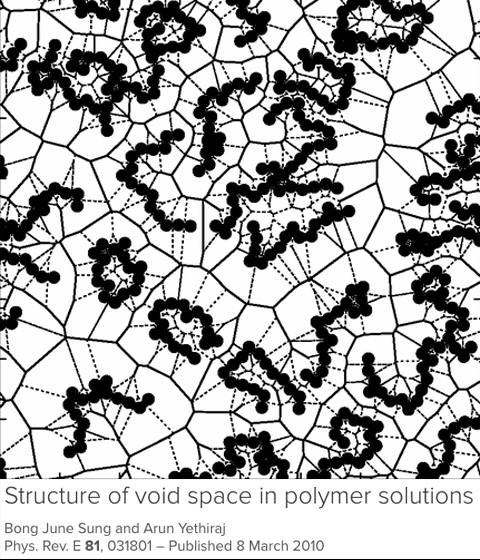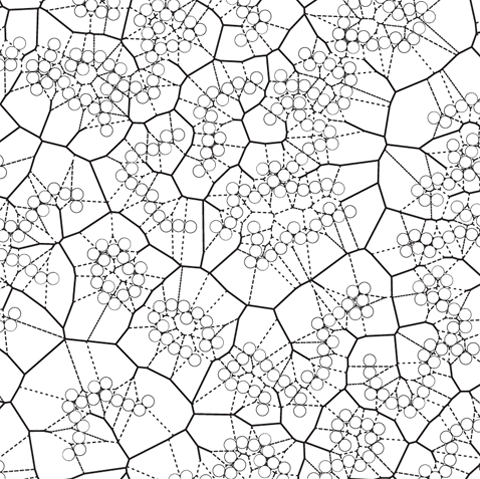Color Charge: Plastics, Polymers, and Voronoi Diagrams
August 2, 2017
The PhysicsCentral team is excited to announce a new project that we've been working on: Color Charge! A coloring book for all ages (but particularly well suited to physics students who need a break from their homework), Color Charge will feature some of the most interesting and intricate images straight from the pages of the American Physical Society's journals, as well as a few of our favorites from other sources. We picked mostly based on which ones would make good coloring pages, but each picture will be accompanied by a caption explaining what's going on in the image—and in the paper that it's from. Keep an eye out for the coloring book itself, and for more images from it to be posted here!
A Polymer Puzzle

What's Going On Here?
Any time you have a bunch of identical molecules linked together into a larger molecule, it’s called a polymer. For instance, plastics are usually composed of polymers—but that’s not to say that all the molecules in a plastic cup are linked together. The polymer chains, sometimes hundreds of molecules in length, are long enough to get tangled up and interwoven to form a solid—sort of like a clump of cat fur.
This figure, known as a Voronoi diagram, was created to examine the gaps among chains in a polymer material. This can help us understand and predict a material’s properties, like how airtight or stable a plastic will be. Each of the circles represents a monomer—a component of a polymer chain—and around each monomer is a region of the diagram called a cell: the space that’s closer to that monomer than to any other. Voronoi diagrams are useful in all sorts of contexts, but this one helps us analyze how freely monomers and polymers can shift around. Solid lines indicate a path that a free monomer could take across the map, while dashed lines are ones where it’s too tight for the particle to squeeze through.
Want to color it yourself? You can download a .pdf of this page from the coloring book by clicking the image below, and print it out!















